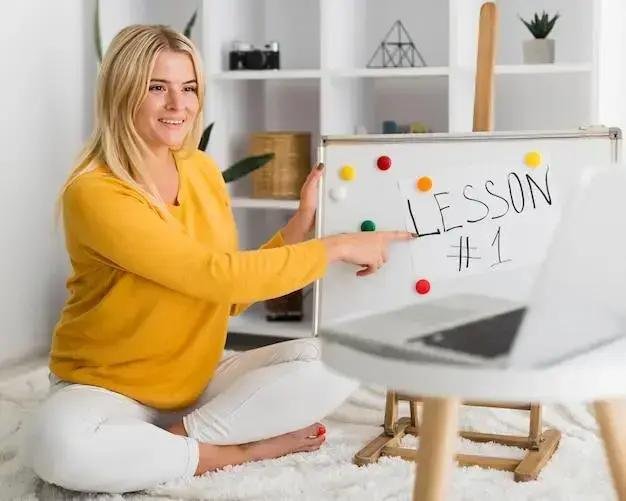If you’ve ever wanted to dive into the world of sketching, you’re in the right place!
This step-by-step sketching guide is designed to help you unleash your inner artist, whether you’re a complete beginner or someone looking to refine your skills.
We’ll cover everything from the basic principles of sketching to the tools you’ll need, and even some common pitfalls to avoid.
So grab your pencils and let’s get started on this creative journey!
Understanding the Basics of Sketching
Understanding the basics of sketching is the first step in developing your artistic skills. At its core, sketching is about capturing ideas quickly and effectively. You don’t need to be a master artist to start sketching; all you need is a pencil and paper!
One of the fundamental concepts in sketching is line quality. This refers to the thickness and darkness of the lines you create. Experimenting with line quality can add depth and interest to your sketches. Try varying your pressure on the pencil to see how it affects the lines.
Another important aspect is shading. Shading helps to create the illusion of depth and dimension in your sketches. You can achieve different shades by adjusting the pressure on your pencil or using different pencil grades. For instance, softer pencils (like 4B) produce darker lines, while harder pencils (like H) create lighter ones.
Don’t forget about proportions. Getting the proportions right is crucial for making your sketches look realistic. A good practice is to use a grid method or to measure with your pencil to ensure that the sizes of different elements in your sketch are accurate.
Finally, remember that sketching is about practice. The more you sketch, the better you’ll become. Don’t be afraid to make mistakes—they’re part of the learning process! Set aside some time each day to practice, and soon you’ll see improvement in your skills.
Choosing the Right Tools for Sketching
Choosing the right tools for sketching is essential for enhancing your artistic experience and achieving the results you desire. Let’s break down some of the key tools you’ll want to consider as you embark on your sketching journey.
First up is the sketchbook. A good sketchbook should have quality paper that can handle various mediums, whether you’re using pencils, ink, or markers. Look for a sketchbook with a weight of at least 80 lb (or 180 gsm) to ensure it can handle erasing and layering without tearing.
Next, let’s talk about pencils. Different pencils serve different purposes. For general sketching, a range of pencils from H (hard) to B (soft) is ideal. H pencils are great for fine lines and details, while B pencils are perfect for shading and darker areas. A good starter set might include 2H, HB, and 2B pencils.
Another essential tool is the eraser. A quality eraser can make a world of difference. Consider getting a kneaded eraser for lifting graphite without damaging the paper, as well as a plastic eraser for more precise corrections. Having both types on hand will help you tackle mistakes effectively.
Don’t forget about blending tools! Blending stumps or tortillons can help you achieve smooth transitions in shading. These tools allow you to blend graphite seamlessly, creating a more polished look in your sketches.
Finally, consider adding some fine liners or pens to your toolkit. Once you’re comfortable with sketching, using ink can help you define your drawings and add contrast. Look for pens with varying nib sizes to create different line weights and textures.
In summary, the right tools can greatly enhance your sketching experience. Invest in quality materials that suit your style and preferences, and you’ll find that they inspire you to create more!
Techniques for Effective Sketching
When it comes to effective sketching, mastering a few key techniques can take your skills to the next level. Let’s explore some of these techniques that will help you create more dynamic and engaging sketches.
One fundamental technique is gesture drawing. This method focuses on capturing the essence of a subject quickly, typically within a short time frame (like 30 seconds to 2 minutes). Gesture drawing encourages you to observe the movement and posture of your subject, which can lead to more lively and expressive sketches.
Another valuable technique is blocking in. Start your sketch by lightly outlining the major shapes and forms of your subject. This helps you get the proportions right before diving into details. Once you’re satisfied with the overall structure, you can gradually refine and add details to your sketch.
Next, consider using hatching and cross-hatching for shading. Hatching involves drawing parallel lines to create shading, while cross-hatching involves layering lines in different directions. These techniques can add depth and texture to your sketches, making them more visually interesting.
Don’t forget about negative space drawing. This technique involves focusing on the spaces around your subject rather than the subject itself. By drawing the negative spaces, you can better understand the overall composition and proportions, leading to more accurate representations.
Lastly, always remember to practice regularly. Set aside time to sketch daily or weekly. Experiment with different subjects, styles, and techniques. The more you sketch, the more confident and skilled you’ll become. Don’t be afraid to try new things and make mistakes along the way!
Common Mistakes to Avoid in Sketching
Even the most seasoned artists make mistakes, but being aware of common pitfalls can help you improve your sketching skills. Let’s dive into some common mistakes to avoid in your sketching practice.
One major mistake is neglecting proportions. It’s easy to get caught up in details and forget to check if the sizes of different elements in your sketch are accurate. A good practice is to use measuring techniques, like comparing the lengths of different parts of your subject with your pencil, to ensure everything is in proportion.
Another common error is overworking your sketches. While it can be tempting to keep adding details, sometimes less is more. Overworking can lead to a muddy appearance and loss of freshness in your work. Know when to stop and appreciate the simplicity of your initial lines.
Many beginners also struggle with inconsistent line quality. Using a single line weight throughout your sketch can make it look flat. Instead, experiment with varying line thicknesses to create depth and interest. Thicker lines can be used for outlines, while thinner lines can add delicate details.
Don’t forget about not practicing enough. Sketching is a skill that improves with regular practice. If you only sketch occasionally, you might find it hard to develop your style and technique. Make it a habit to sketch daily, even if it’s just for a few minutes.
Lastly, avoid being overly critical of yourself. It’s easy to get discouraged when a sketch doesn’t turn out the way you envisioned. Remember that every artist has off days, and each sketch is a learning opportunity. Embrace the process and focus on improvement rather than perfection.
Practicing Your Skills: Exercises for Improvement
Practicing your sketching skills is essential for improvement, and incorporating targeted exercises can make a big difference in your development as an artist. Here are some effective exercises to help you enhance your sketching abilities.
One great exercise is daily sketching. Set aside a specific time each day to sketch something, whether it’s an object in your home, a scene outside, or even a quick self-portrait. Consistency is key, and by sketching daily, you’ll build muscle memory and confidence in your skills.
Another beneficial practice is still life drawing. Gather a few objects from around your home and arrange them in an interesting composition. Focus on capturing the shapes, proportions, and shadows. This exercise helps you improve your observational skills and your ability to render three-dimensional forms on a two-dimensional surface.
Consider trying contour drawing as well. In this exercise, you draw the outline of a subject without looking at your paper. This technique encourages you to truly observe the subject and can lead to more expressive and fluid lines in your sketches. It’s a fun way to loosen up and break free from perfectionism.
Another effective exercise is gesture drawing, where you quickly sketch a subject in just a few minutes. This can be done with a live model or even with photographs. The goal is to capture the essence and movement of the subject without getting bogged down in details. This practice helps improve your speed and ability to capture dynamic poses.
Finally, create a sketchbook challenge for yourself. Choose a theme or a specific subject to focus on for a week or a month. This could be anything from drawing animals to exploring different facial expressions. Challenges not only keep your practice engaging but also push you to explore new ideas and techniques.
Remember, the key to improvement is consistent practice and a willingness to experiment. Embrace the process, and don’t hesitate to try new exercises that push your boundaries!
Conclusion
In conclusion, mastering the art of sketching involves understanding the basics, choosing the right tools, and employing effective techniques.
By recognizing common mistakes and committing to regular practice through targeted exercises, you can significantly enhance your skills.
Remember, sketching is a journey, and every line you draw contributes to your growth as an artist.
Embrace the process, stay curious, and most importantly, have fun with your sketching adventures!
FAQ – Common Questions About Sketching
What are the essential tools I need for sketching?
You need a good sketchbook, a range of pencils, an eraser, blending tools, and fine liners or pens.
How can I improve my sketching skills?
Regular practice, trying different exercises, and studying proportions and shading techniques can help improve your skills.
What is gesture drawing?
Gesture drawing is a quick sketching technique that captures the essence and movement of a subject within a short time frame.
How do I avoid common mistakes in sketching?
Focus on proportions, avoid overworking your sketches, vary line quality, and practice consistently to minimize mistakes.
What exercises can I do to practice sketching?
Daily sketching, still life drawing, contour drawing, gesture drawing, and setting up sketchbook challenges are all effective exercises.
Is it normal to feel discouraged when sketching?
Yes, it’s completely normal! Every artist has off days. Embrace the learning process and focus on improvement rather than perfection.





